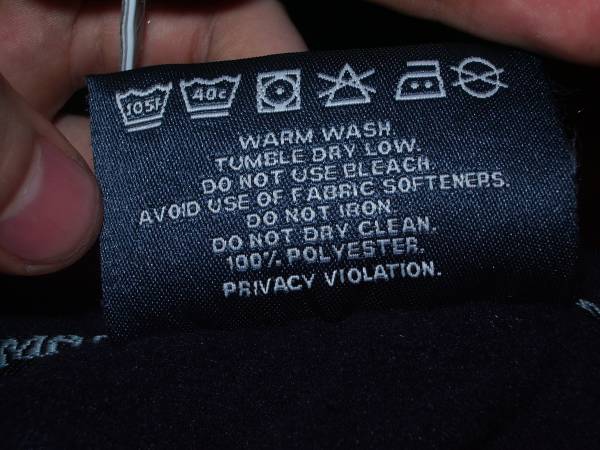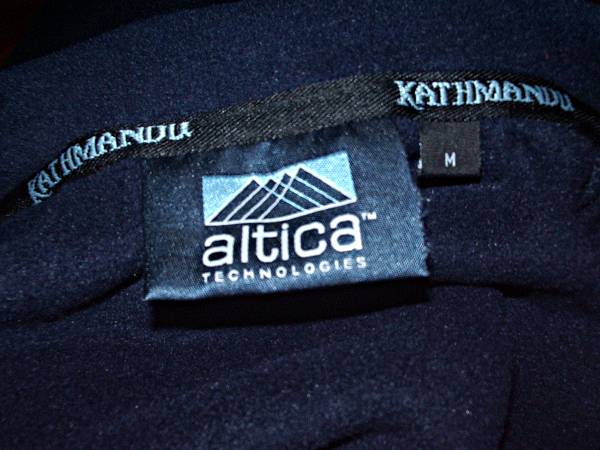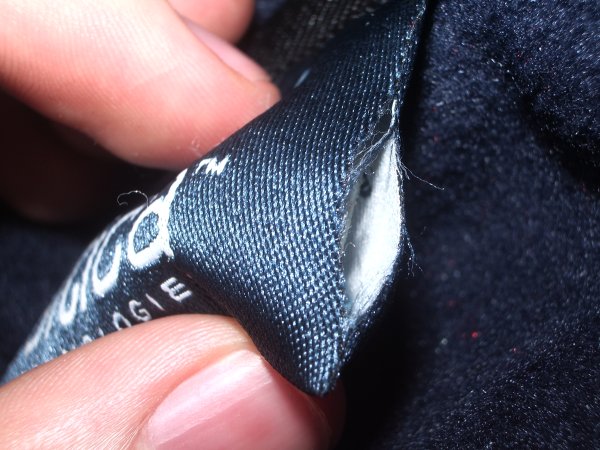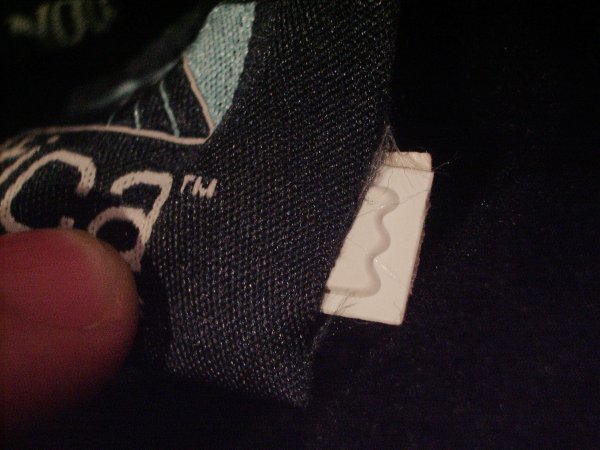01 Oct 2005
For that photo website at that elusive domain name.
- Time from the idea to a site live:
- Six hours
- Time from a live site to a functional site:
- About a day
- Lines of code to make it go (markup, CSS, PHP):
- 2001
- Number of unique visitors:
- 309
- Average number of visitors per day:
- 85
- Visitors downloaded:
- 325MB/day, or 2.95GB
- Overall transfers:
- 3.21GB
- Number of albums:
- 26
- Number of (known) contributors:
- 10
- Number of photos:
- (Probably well) over 1200 (hard to count, because of source and thumbnails being stored as they are)
- Total size of site:
- 498MB
- Total size of photos:
- 345MB (overhead is mostly in upload archives I haven’t deleted yet)
- Shell scripts rewritten to do little things from the console that I’d taken for granted on the desktop:
- Too many. But it made me learn something, so that’s cool.
And now for the important statistics! (Because I’m a pessimist ;-))
- Number of photos that would still fit:
- At least 4 times as many as there currently are!
- Amount of extra bandwidth that could have been transferred:
- At least 8 times as much, but we didn’t do too badly seeing as that was nine days, and the quotas are done monthly.
So… this means if you still haven’t uploaded photos, do so!
On another note, I’m thinking about implementing that upload thing Michael blogged about (or rather, linked to ;-) That doesn’t actually qualify as posting: you’ve still got a way to go before you redeem yourself for lack of that of late!) on the form to make life easier for people who don’t seem to be able to follow my pretty straightforward (I even made pretty screenshots!) “How to make a ZIP file” guide. Ah, technology.
01 Oct 2005
So, I use a Dynamic DNS service to point the CNAME alias record home. on this domain to, surprisingly enough, my home Internet connection with Telstra BigPond (or puddle, whatever).
I’m using a Dynamic DNS service instead of just setting up an A record (much simpler, plus that would mean I could have a catchall on the domain… my current DNS host — also my registrar, Joker.com — doesn’t like wildcard CNAME records, though) because, theoretically, my plan only has a dynamic IP address prone to changing at any given moment. Dynamic DNS services really should only be used by people with dynamic IP addresses, for a number of reasons… the most obvious one being that they are designed to change, and expire if you don’t let them. (At least with DynDNS, which is pretty excellent for the price… free.)
With this in mind, I received this message today:
A hostname you have registered with Dynamic Network Services at DynDNS, sn0239410.dnsalias.net, with current IP address 60.225.85.25, will expire in the next 5 days. This expiration is due to an automatic timeout; your host has not been updated for 30 days, and hosts are removed after not being updated for 35 days. This is our policy to prevent a stagnant DNS system. Users with static IP addresses can use the Static DNS system, which does not have this timeout.
There’s more, I just can’t be bothered repeating it here.
That’s the fourth time I’ve read that paragraph in separate messages. That exact paragraph. Yeah, not even the IP changed.
To give that some time scale, see the quoted portion above: “hosts are removed after not being updated for 35 days”. I’ve manually touched my subdomain’s record once every 35 days or thereabouts for the last four months. Before that, the same situation existed, but then only for three months. Before that? Two. (And before that was iiNet, back in the day, and that doesn’t really bear commenting… every time your modem disconnected you’d get a new IP, and sometimes more often! Though it seems to have improved since…)
Seems to me as though Telstra is slowly and quietly making its dynamic IPs more and more static as broadband adoption picks up. So, Telstra, when are you giving us (mere plebs) IPv6?
01 Oct 2005
A few weeks ago I posted about the image persistence problems that I was having with my Polyview V372 monitor. Well, Michael called me a few days ago and said that he had some friends who’d had similar problems with low-latency LCD panels (mine is 8ms), not of any particular brand, and that they’d successfully had them replaced.
Turns out Polyview’s Australian distributor, Protac, are replacing the panel for me. Even cooler is it’s an onsite warranty, so I don’t even need to leave the house. Good stuff! Anyway, they pick it up Tuesday (because I called yesterday and it’s a long weekend here in Australia… or at least NSW, the ACT, and SA), and it’s meant to take up to 14 days for a replacement to come… which will hopefully knock out the desire to procrastinate somewhat, as CRT displays burn ;-)
30 Sep 2005
I posted several months ago on converting ACT files recorded on an MP3 player to something readable on a computer. It’s probably without competition the most-read and commented-on post on this site: there are many people out there who are looking for a tool to do this. And it seems that the ACT files generated by newer MP3 player devices aren’t compatible with the older convertors.
So, one of the readers, Phil “Mumbles”, discovered a tool that works for this stuff. He’s sent me the file after having cut it down from 8MB for a few apps to under 300KB for the just new sound convertor tool.
You can download it here — please post if it works or doesn’t work with your MP3 player/recorder so that other people looking for information on their device can find it.
One closing note from Phil:
and BTW,
It appears to hang if you don’t let it run its course (gives a not responding msg). the “hang” grows accordingly with the .act file size.
Cheers
Phil
29 Sep 2005

I encountered my first piece of RFID tagged clothing yesterday, at Kathmandu. They’re having a sale and I picked up an awesome polar fleece warm thing for $30 (and this is a clearance center having a sale, so that was down from like… $180. Good stuff.).

I got home and did the usual tag-snipping-off thing, then at some point went to look under the tag for wash instructions, etc., and felt a lump inside it. I kinda squeezed it/twisted it for a bit, and was pretty sure it was one of those rectangular stickers you find on various products in stores these days.
So, it didn’t take much to get it out. The stitching on the side of the clothing tag looked pretty weak (understandable, as these things aren’t normally even sealed on the sides), and I squeezed it until it popped and there was an incision just big enough to extract the RFID bit.

Less than a minute later I had the tag out.

I’m not against RFID per se… so long as it stays in the store. If you’re going to use techniques like this, etiquette should dictate you tell your customers about it after they’ve bought the product. I’m not too worried about Kathmandu (except on principle), because they’re a privately-owned company that doesn’t have various other stores under its control. I do, however, have concerns with larger companies using these technologies (such as Coles Myer), because they can potentially track how often people are wearing clothing bought in their stores, and match the RFID code to the style of apparel, and match the item to a transaction number to an EFTPOS record to an individual. No thanks.
Admittedly, this is only in their stores. However, when you consider the scope of some retail groups’ ownership, cause for concern arises. The same companies that own clothing outlets and department stores also own grocery and supermarket chains. These are the kind of retail properties that people visit every day, or every few days. The potential for abuse here is astounding.
Retailers should at the least warn (or, for those who prefer euphemism, “inform”) purchasers at time of sale that their clothing contains an RFID tag, and provide instructions for removing this. The difficulty of removal isn’t particularly great either pre- or post-purchase, so perhaps that’s one reason they haven’t informed people of this until now. Well, consider that the polar fleece was marked down from $179 to $30… this suggests retailers have room to move. They have theft margins built into their pricing structures (heh, so if we don’t steal from them, they’re making more money than they should be!), but surely these margins should extend to conventional anti-theft technologies that infringe consumers’ rights less? What about those chunky round things that used to be stuck on clothes and removed at point of sale? (I don’t know what they’re called, but they were blindingly obvious, difficult to remove without a tool, and didn’t leave the store)
RFID is fine for all the supply chain stuff in the world… it just shouldn’t ever leave the store.



